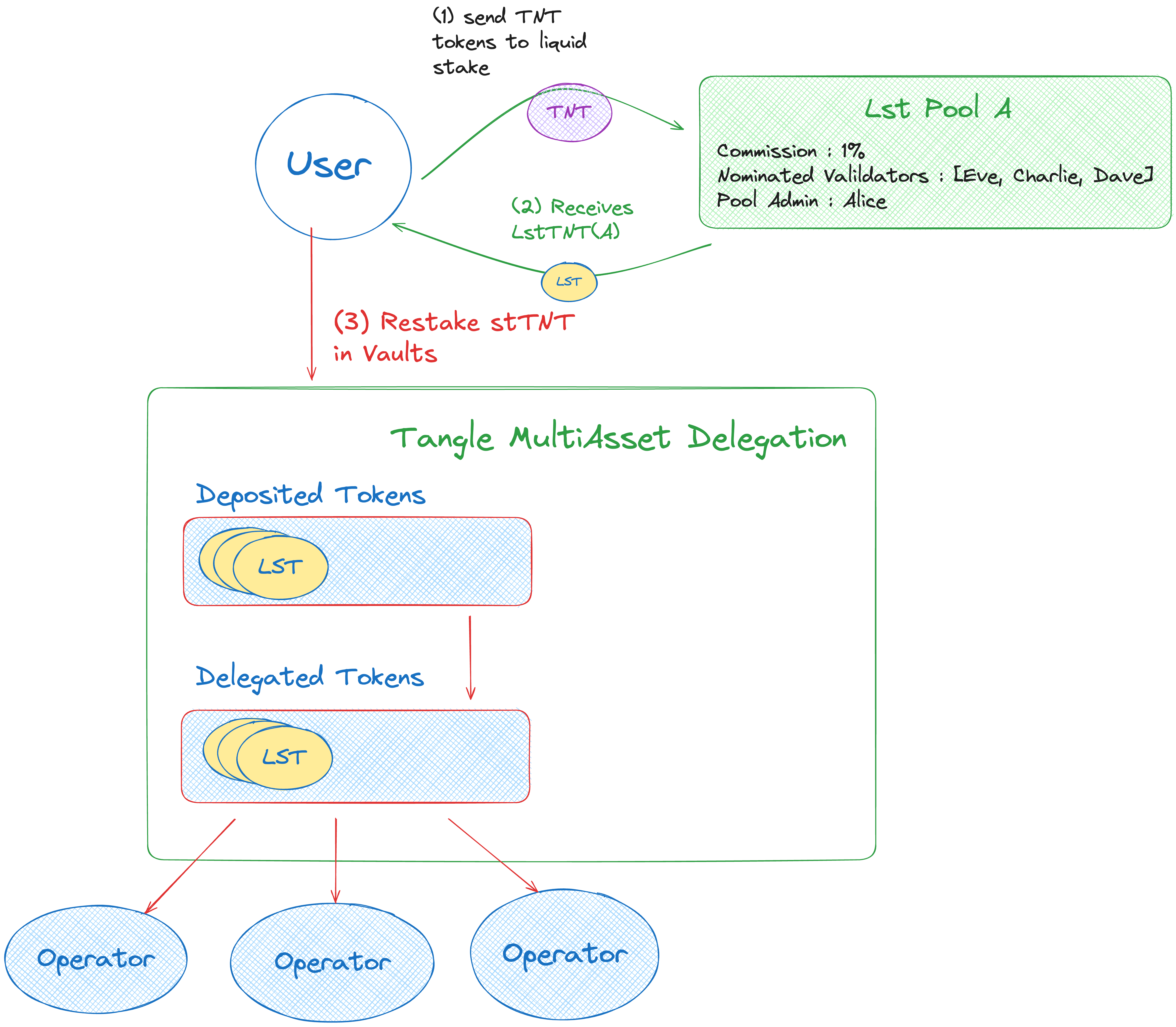Introduction to Tangle Restaking
Restaking is an innovative concept in blockchain technology that allows validators to reuse their staked tokens to provide additional services and earn rewards without unstaking from the original network. This enhances the efficiency and utility of staked assets. Restaking can be provided through native staking mechanisms or through staking of existing liquid staked tokens, exposing the stake to additional rewards and slashing conditions.
Tangle provides permissionless asset restaking to developers and customers building Blueprints and deploying Blue service instances. Any asset created on and bridged to Tangle can be used as collateral to stake in our restaking infrastructure. These restaked assets, commonly in the form of LSTs, act as security collateral for service instances that are requested on-demand. The restaking providers (the restakers) earn rewards proportional to the rewards issued to the services and Blueprints on Tangle, depending on the usage and utility of the services themselves.
The restaking infrastructure divides assets into pools, which can be created to represent a single asset or a basket of similarly valued assets. Pools of assets are used to secure Tangle Blueprint service instances and are rewarded collectively as pools. This is beneficial when integrating many liquid staked tokens of a single protocol, such as validator-specific liquid staking protocols, or when bundling lots of different LSTs of a single ecosystem such as a basket of ETH LSTs.
Benefits of restaking include:
- Increased efficiency of staked capital by sharing it across instances
- Additional revenue streams for stakers and operators
- Boosted security for protocols leveraging new assets as security capital
- Innovation in new blockchain services by harnessing decentralized resources
How Tangle Network Uses Restaking

Tangle Network has implemented a unique restaking system to allow its validator set to provide Actively Validated Services (AVS) to power advanced decentralized applications. Users can restake their TNT tokens to run service instances based on blueprints created by developers.
Tangle noderunners can opt-in to restake a portion of their staked TNT tokens to provide AVS instances such as oracles, privacy-preserving computation, and more. In return, they earn service fees and additional inflation rewards on top of their base validation rewards.
Here's how it works:
- Developers create blueprints that define the specifications and requirements for AVS instances.
- Operators create a restaking profile by allocating their restaked TNT to specific blueprints they want to support.
- Users can request AVS instances from Tangle's restaked Operators for a fee. Requested instances are assigned to restaked operators based on the blueprint's criteria.
- Operators must execute the AVS instances they are assigned. Failure to do so may result in penalties or reduced rewards.
- Participating operators earn the service fees and proportional inflation rewards based on their restaked amounts and instances executed.
This restaking model allows Tangle to offer unique AVS instances powered by its decentralized validator set. Developers can leverage these services to easily deploy advanced decentralized applications like trustless cross-chain bridges, privacy solutions, identity systems, and more.
By restaking, Tangle noderunners gain additional revenue, the network gains efficiency from its staked supply, and the ecosystem gains access to powerful new primitives to fuel innovation. Restaking helps align incentives and harness the security of the underlying proof-of-stake blockchain for exciting new use cases.